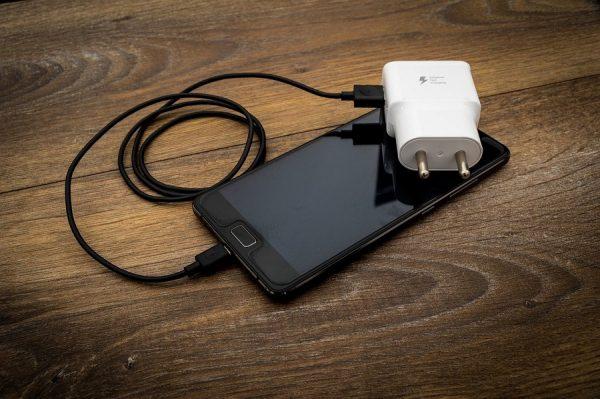The European Commission wants a common mobile charger and other devices in 2024
The European executive calculates that by reducing the number of new chargers produced and disposed of, the amount of electronic waste will decrease by almost a thousand tons per year.
The European Commission (EC) took a step yesterday important to reduce the generation of electronic waste and also the inconvenience that consumers experience due to differences and incompatibilities between chargers for electronic devices. After years of working with the industry on the basis of a voluntary industry approach, the number of mobile phone chargers has been reduced from thirty to three in the last decade, but a complete solution could not be achieved. Now, the EC presents a legislative proposal with the aim of establishing a common charging solution for different devices.
With the proposed revision of the Radio Equipment Directive, the charging port and fast charging technology will be harmonized: USB-C will become the standard port for all smartphones, tablets, cameras, headphones, portable speakers and portable game consoles. In addition, the Commission proposes the separate sale of chargers and electronic devices. This will increase consumer convenience and reduce the environmental footprint of producing and disposing of chargers, thus supporting the green and digital transitions.
Margrethe Vestager, Executive Vice President, Digital Europe, said: “European consumers have experienced enough frustration with incompatible chargers piling up in their drawers. We have given the sector ample time to find its own solutions; the time has come for legislative action in favor of a common charger. This is a major success for our consumers and the environment, and is in line with our green and digital ambitions.”
For his part, Thierry Breton, Commissioner for the Internal Market, stated that «the chargers feed all our most essential electronic devices. As the number of devices increases, more and more chargers are sold that are neither interchangeable nor necessary. Let's put an end to this situation. With our proposal, European consumers will be able to use a single charger for all their portable electronic devices – a big step towards increasing convenience and reducing waste.”

Thus, the Commission has proposed a harmonized charging port for electronic devices: USB-C will be the common port, allowing consumers to charge their devices with the same charger, regardless of device brand.
For the CE, harmonizing fast charging technology will help prevent different manufacturers from unreasonably limiting charging speeds and will help ensure that charging speeds are the same when using a compatible charger for a device.
On the other hand, selling chargers and electronics separately will limit the number of chargers you don't want or use. It is estimated that by reducing the number of new chargers produced and disposed of, the amount of electronic waste will decrease by almost 1,000 tons per year.
In addition, manufacturers will have to provide consumers with relevant information on charging performance, including information on the power required by the device and whether it supports fast charging. This will make it easier for consumers to check if the chargers they already have meet the requirements for their new device or help them select a compatible charger. Together with the other measures, this action could help consumers limit the number of new chargers purchased, saving €250 million a year on unnecessary charger purchases.
The revision of the Radio Equipment Directive is part of a broader action by the Commission to address the sustainability of products, in particular electronic equipment, on the EU market, which will be the focus of a future proposal on sustainable products.
Full interoperability
The European Parliament and the Council must now adopt the proposal for the revision of the Radio Equipment Directive through the ordinary legislative procedure. A transition period of 24 months from the date of adoption should give the industry enough time to adjust before it comes into force.
In order to have a common charger, full interoperability is necessary at both ends of the cable: the electronic device and the external power supply. Device interoperability (by far the biggest challenge) will be achieved by the new proposal. The revision of the Commission Regulation on Ecodesign will address the interoperability of the external power supply. This will be launched at the end of this year so that its entry into force can be aligned with yesterday's proposal.
Three chargers per person in the EU
In 2020, approximately 420 million mobile phones and other portable electronic devices were sold in the EU. On average, consumers own about three mobile phone chargers, of which they use two on a regular basis. Despite this, 38% of consumers state that they have had problems at least once charging their mobile phone due to the incompatibility of the available chargers. The situation is not only inconvenient, but also costly for consumers, who spend an estimated €2.4 billion a year on loose chargers that are not sold together with their electronic devices. In addition, it is estimated that discarded and unused chargers represent 11,000 tons of electronic waste per year.
To address the challenges for consumers and the environment, the Commission has been seeking a common charging solution for mobile phones and similar electronic devices since 2009. First, it facilitated the conclusion of a voluntary agreement by the industry in 2009, which led to the adoption of the first MoU and a reduction in the number of charging solutions on the market for mobile phones from thirty to just three. After the expiration of the memorandum in 2014, the industry submitted a new proposal in March 2018, which was not considered satisfactory for achieving a common charging solution or meeting the need to increase consumer convenience and reduce e-waste .
